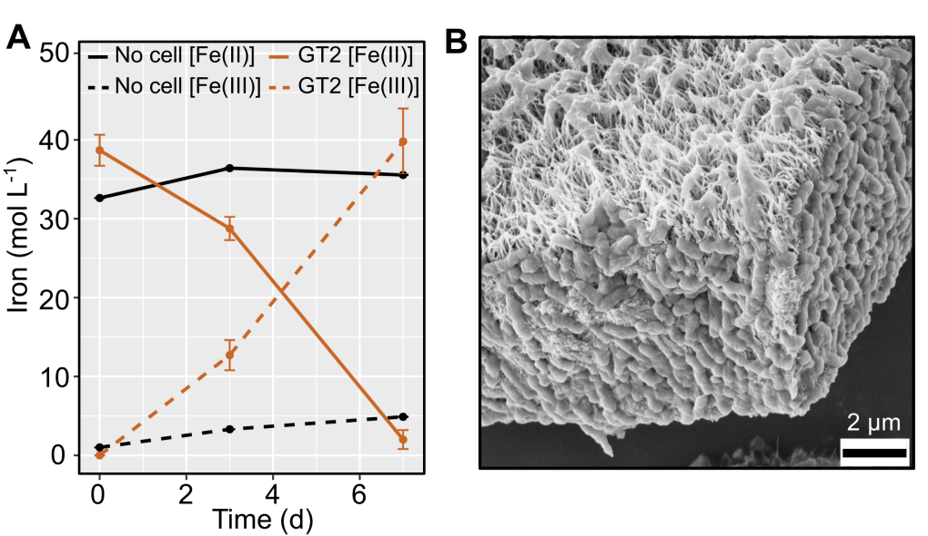CMI researchers at Ames Laboratory and Purdue University conducted the research for this highlight

(A) Demonstration of Fe(II)-oxidation capability of GT2.
(B) Scanning electron micrograph (SEM) of biofilm harvested under Fe(II)-oxidizing conditions.
Innovation
Iron-oxidizing and acid-generating microbes can extract Te from dilute sources such as mine tailings.
Achievement
The indigenous acidophilic and iron-oxidizing bacterium Acidithiobacillus ferriphilus GT2 was isolated from gold tailings, and its genome was sequenced and annotated.
Significance and Impact
- First complete genome sequence of an Acidithiobacillus ferriphilus species, providing a valuable resource for improving its utility in biomining.
- Microbially oxidized iron, Fe(III), promotes sulfide mineral dissolution, leading to acid generation and metal release.
- Strain GT2 forms biofilms on minerals; proximal generation of Fe(III) may enhance Te leaching from tailings as low-grade yet voluminous sources.
Hub Targets Addressed
- Grand challenge: Unlocking unconventional resources.
- Industry adoption of a technology for source diversification for a material other than REE or Li.
Complete annotated genome of Acidithiobacillus ferriphilus GT2 was submitted to Microbiology Resource Announcements.
